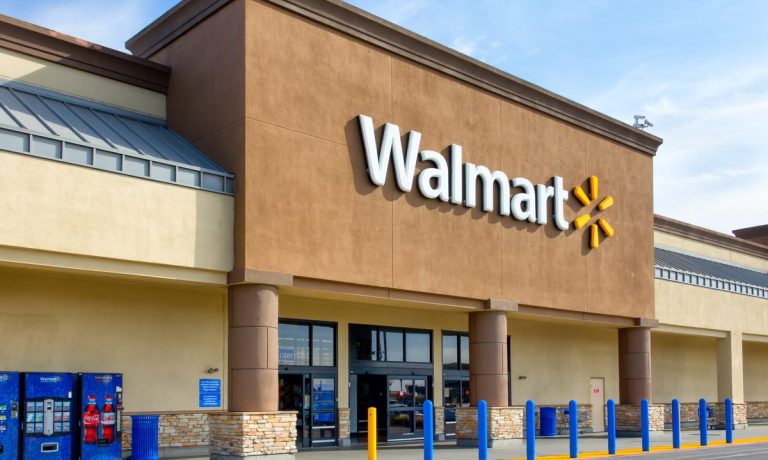AMZN vs WMT Weekly: Retailers Focus on Holding the Right Inventory

After a year of sparse shelves, rampant out-of-stocks and a strained holiday season that saw seasonal sales pulled back to Halloween, it is understandable that the nation’s leading retailers would want to load up on merchandise early to not be caught short.
While planning ahead and building inventory makes good business sense, the problem is, it is also expensive and fraught with risk since consumer buying habits are hard to predict and are easily impacted by outside influences — especially now — when inflation and other macroeconomic challenges are posing problems for retailers not seen in generations.
While Amazon and Walmart were busy refining their sales efforts and operations, the retail mood this week was set and dominated by rival Target, which told investors (June 7) that it was going into “aggressive cost control” mode via a multi-pronged “inventory optimization strategy” that will see lots of sales at its 2,000 stores and website.
While the announcement caught investors and markets by surprise, the culprit for the cost cuts was the same as the Minnesota-based retailer pointed to a “rapidly changing economic environment” as a result of mounting challenges surrounding wage costs, high fuel prices and inflation.
Don’t Blame the Messenger
Target may have been the messenger but the message it delivered was relevant to the entire industry and triggered a week of retail reverberations surrounding the ongoing inventory and cost challenges.
This reality check served as a reminder that all is not right within the retail patch and that recent mumblings of second-half hope and budding optimism may have been premature given that Walmart had made similar comments a month earlier when it said it would be taking action to right-size its swollen inventory levels after delivering its own earnings disappointment.
“We like the fact that our inventory is up because so much of it is needed to be in-stock,” Walmart CEO Doug McMillon told investors on the company’s Q1 earnings call May 19. “But a 32% increase is higher than we want so we’ll work through most, or all of, the excess inventory over the next couple of quarters.”
McMillon said the spike in food costs had pulled more dollars away from general merchandise spending than it expected but assured investors that it was taking action to correct the problem and would continue to do so.
The challenge now, that Walmart, Amazon and almost every other mass retailer are facing, is building up the right inventory while also correctly deciding which stuff should be marked down and moved out. If that wasn’t challenging enough, this real-time projecting and pricing matrix is unfolding within a dynamic marketplace that has multiple low-price players that refuse to be undersold.
It should make for an interesting — and bargain-filled — summer.
If the Shoe Fits
In the meantime, while Amazon is facing its own share of supply chain challenges and shifting consumer spending ramifications, the Seattle-based online giant unveiled two notable efforts this week that aim to play up convenience.
In announcing the European expansion of Amazon Luxury, the eCommerce leader is betting that high-end consumers want the same convenience and rapid delivery service for pricey designer apparel and accessories that the company’s “regular shoppers” do when ordering everyday items and groceries.
“This is just the beginning, and we look forward to continuing to support brands with innovative tools and resources so they can share their latest collections and unique stories with our customers across Europe season after season,” Ruth Diaz, vice president of Amazon Fashion Europe, said of the Luxury rollout to Germany, U.K., France, Italy and Spain.
It remains to be seen if super-affluent consumers will actually want to one-click purchase a $13,000 Elie Saab gown without seeing it trying it on, versus an in-person visit to a designer boutique.
At the same time, and much more inline with its mainstream focus, Amazon also rolled-out its new virtual try-on feature for shoes. Like its Luxury move, the try-on tech is also jointly touted as a consumer convenience tool as well as an opportunity for brands to better showcase their goods to Amazon’s massive customer base.
Out With the Old, In With the New
Walmart and its rivals may be in the throes of an ongoing inventory challenge but that is not stopping the company from seeking new ways to stock its 4,700 U.S. stores and also mitigate supply chain challenges with hot new shelf-ready products created by an army of domestic entrepreneurs.
This, as the big box leader moves forward with what will be its largest annual “Open Call” event ever at the end of June, when it brings in 1,200 finalists to pitch their products to the company brass.
“Each supplier will be afforded a 30-minute one-on-one pitch meeting for a chance to secure deals ranging from supplying products to a few local stores to supplying products to hundreds of Walmart and Sam’s Club locations as well as Walmart.com and Walmart Marketplace,” the company’s announcement said.
“Open Call” is Walmart’s largest product sourcing event and is part of a 10-year, $350 billion commitment to create domestic jobs via “products that are made, grown, or assembled in the US.”